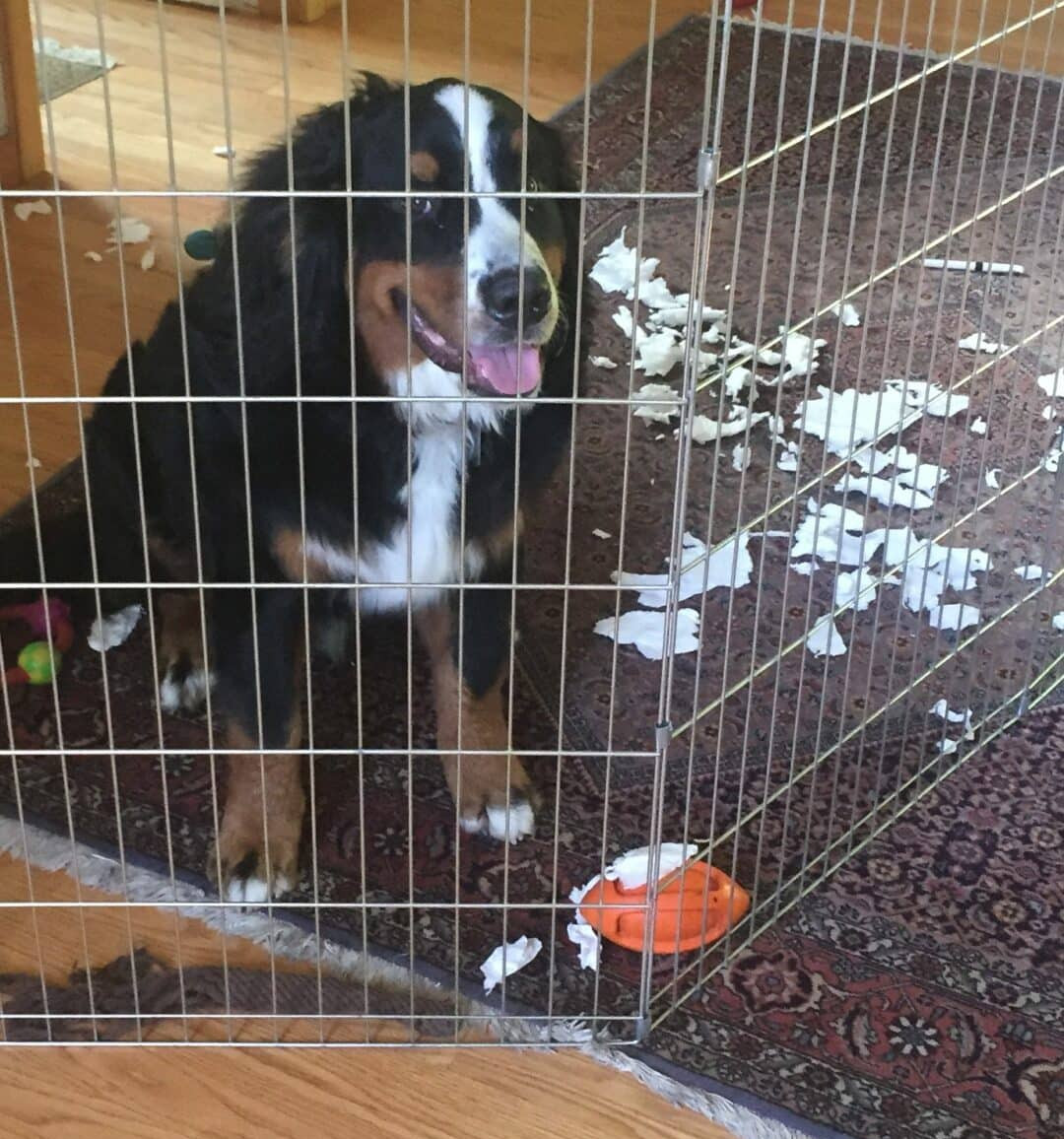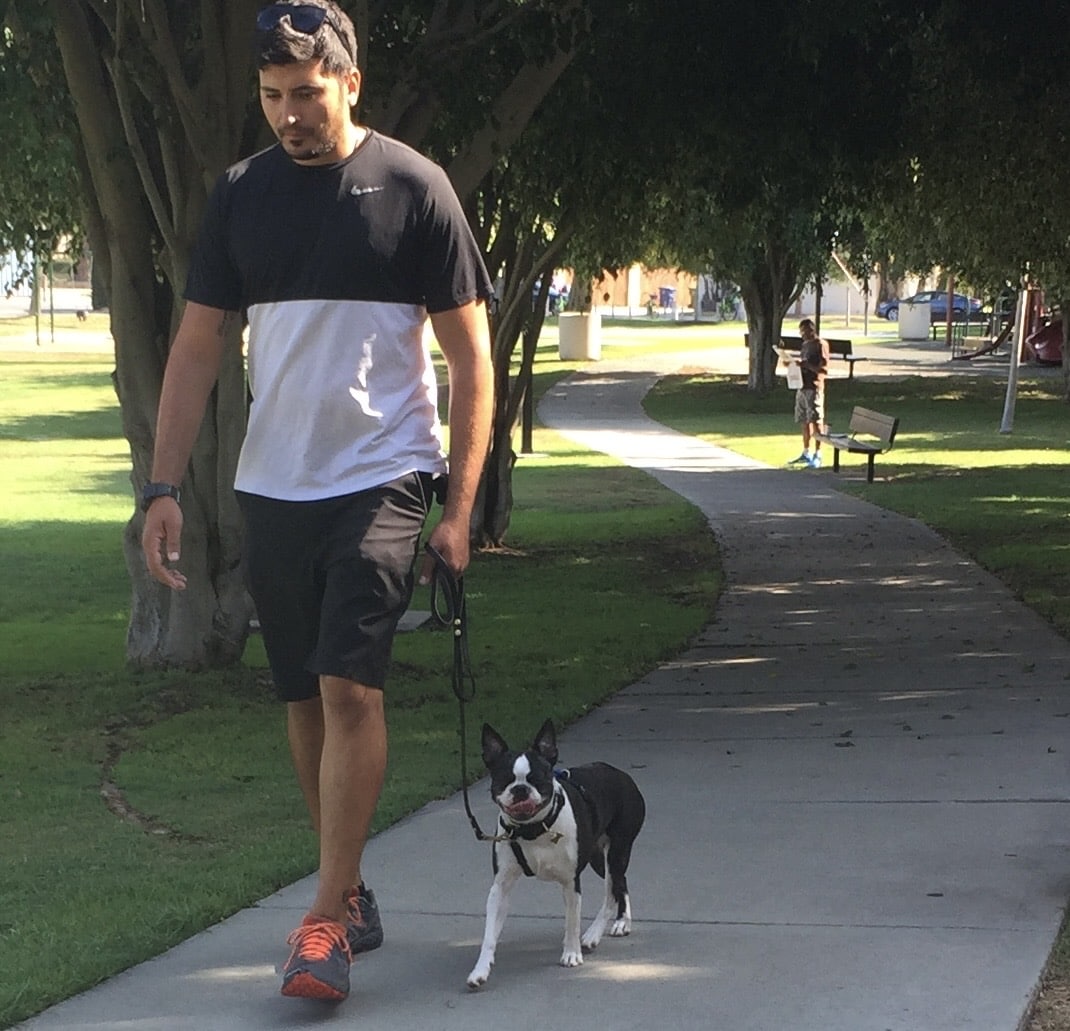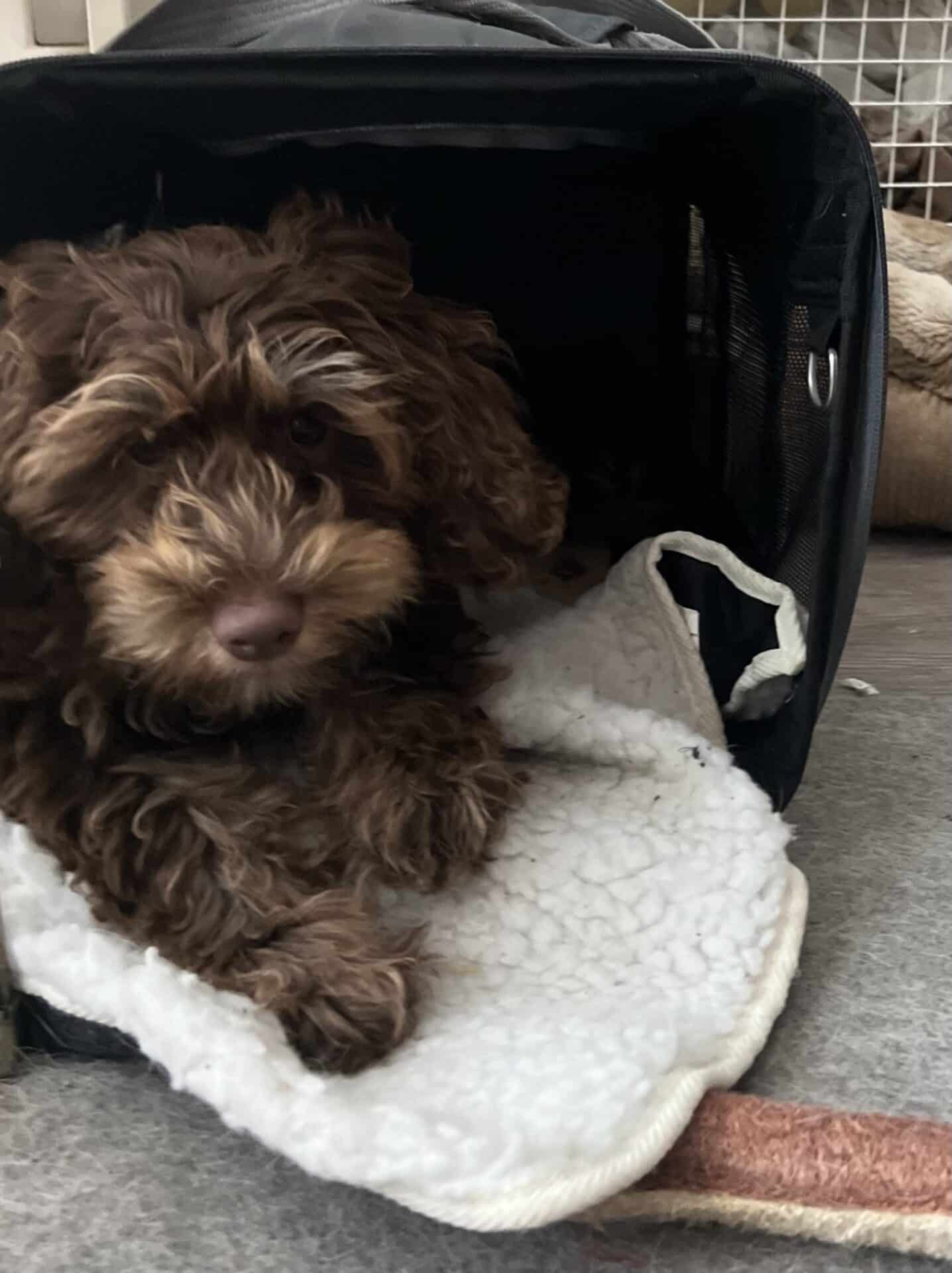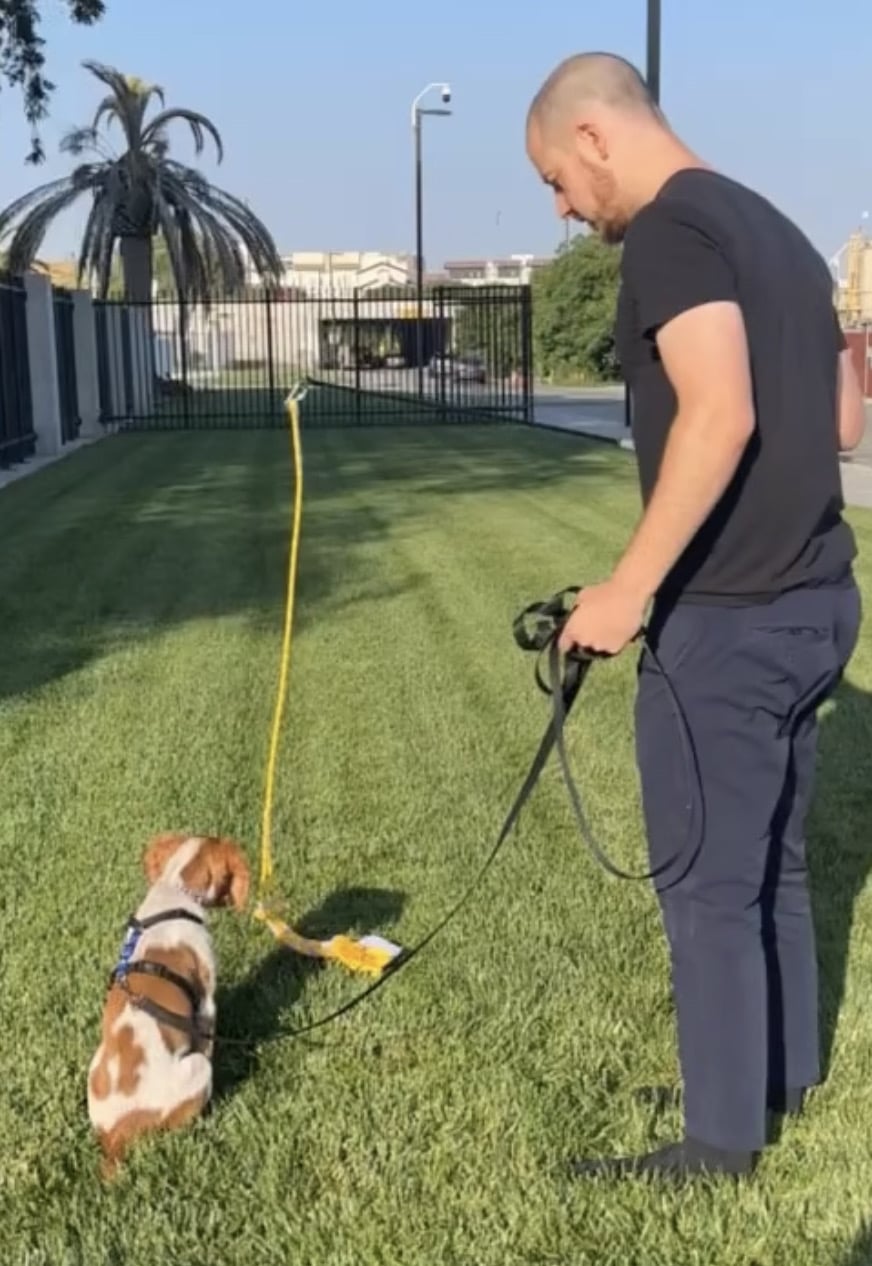Separation anxiety is a constellation of behaviors that result from underlying anxiety and insecurity. Resolving this starts with slowly reducing a dog’s intolerance of being alone, increasing self-confidence, and reducing overall excitement or arousal.
Human-Canine Relationship
A trust-based relationship between a dog and their human(s) can do more to lower anxiety and build self-confidence than anything else. Cooperative relationships start with clear communication between the species. Dogs that feel seen and heard feel safer when they’re alone.

Loose–Leash Walking
Loose-leash walking is a good representation of the human-canine relationship. It requires clear communication that honors the dog’s needs and native canine (body) language.
Dogs who consistently walk on a loose-leash are choosing to cooperate rather than simply obeying. Giving dogs the knowledge and opportunity to make good choices empowers them and deepens the trust bond with their human(s). Loose-leash walking is one of the most useful and fulfilling behaviors in dog-human communication.

Safe Spaces and Sanctuaries
Confinement is key to safe, successful, unsupervised time for puppies and many anxious adult dogs. Confinement can be anything from a kitchen or laundry room with a baby gate across the door, to an exercise pen (for puppies and small dogs) or a crate, depending on the duration and the dog’s behavior during the conditioning (training) process.
Providing anxious dogs with a den-like sanctuary or safe space is an important part of them feeling secure while alone. That den doesn’t need a door to do the job.

Instinct tells dogs that when the back of their neck, spine and rear end are against something solid, they can’t be attacked from behind. A low ceiling, where sound and light are reduced increases the likelihood of a calmer puppy or dog.
In this way a dog’s sanctuary can reduce overall anxiety and result in deeper sleep.

For that reason, I incorporate crate or den conditioning as a part of most separation anxiety programs. A crate can be used with the door open within a larger confined area, or, in short absences, as the primary means of confinement if the dog is appropriately conditioned to being in there, first.
Physical and Mental Exercise for Anxiety
A puppy or dog whose physical exercise needs are met is almost always less anxious than those with pent-up energy. A dog that enjoys daily mental stimulation (enrichment) will typically be less anxious overall.
Not all exercise is created equal, when addressing anxiety-related issues. Activity that requires mental focus is more effective because it drains mental and physical energy, and avoids exciting dogs. A sniffari or decompression walk is more draining than a game of fetch. A game of fetch that incorporates cue (command) practice and self-control is more draining than one that doesn’t.

Helping a dog who panics when they’re alone takes time, patience, and understanding. It helps to recognize that this is a legitimate fear your dog is experiencing, whether it makes sense to you or not.
There are no simple answers for separation anxiety. Dogs are sentient beings with individual needs and preferences.
Working with a canine behavior consultant who specializes in fearful, anxious, reactive dogs can help you determine what works best for you and your dog.
Dee Green has been a professional dog trainer and canine behavior consultant for more than 20 years. She specializes in puppies up to 18 months, and fearful, anxious and reactive dogs of all ages.
©️2025 Dee Green
